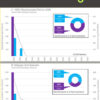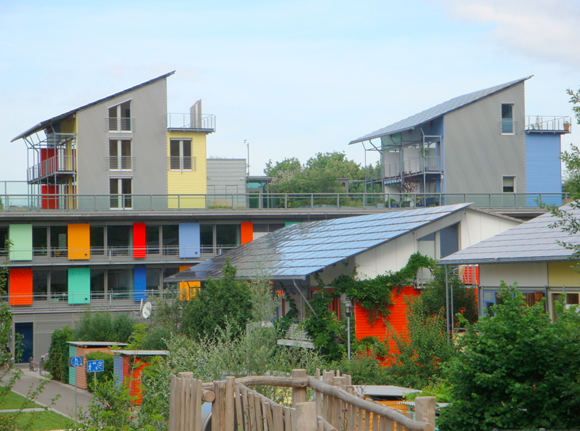
Human life has always depended on variables such as population, resources, and environment. Today, however, we are perhaps the first generation to face the simultaneous worldwide impact of expanding populations, depletion of resources, massive military built-ups for resource wars and homeland security, environmental degradation, and climate change. The causes and consequences are global, and international collective action is critical in driving an effective, efficient, and equitable response on the scale required.
All of this is common knowledge, endlessly discussed, widely published, and yet, incredibly, industrial and urban expansion carries on regardless. Today, the vital difference is that the scale of our crisis is no longer regional or national but global; it involves all of humanity and the entire planet. Urban planners, engineers, and architects still contribute to fifty percent of all man-made greenhouse gases and the mass extinction of species. The long-term solution for this environmental crime lies here, beyond green washing, in how our planned cities and buildings perform and consume on a global scale.
We know that cities and buildings are where life is often at its most precarious; they are also where we have the greatest tangible opportunity for improvement, intervention, and radical change. Living, working, learning, and leisure should overlap and be housed in continuous, varied, and changing, net-zero-fossil operated, flexible infrastructures.
Cities only survive because of human, material, and communication networks with their hinterlands or bioregions—by placing them into a broader geographic context. Sustainability and ecological foot printing can only be realistically applied and globally benchmarked when interrelated life cycles of systems, materials, and land-use planning in this wider geophysical perspective are considered.
Global Resource Use Assessment and Best Practice Sustainability Benchmarking
For decades, resource assessments for international performative benchmarking of countries, cities, and buildings have been monitored under the umbrella of the United Nations Framework Convention on Climate Change. The UN Intergovernmental Panel on Climate Change (IPCC) was established by the World Meteorological Organization (WMO) and the United Nations Environment Programme (UNEP) to assess scientific, technical, and socio-economic information concerning climate change, its potential effects, and options for adaptation, mitigation, and public policies. UNEP facilitates the transition to low-carbon societies, biodiversity protection climate-proofing efforts; it improves understanding of climate change science, raises public awareness about this global challenge, and develops guidelines for calculating GHG Emissions for benchmarking countries, cities, businesses, and non-commercial organizations (http://unfccc.int/ghg_data/items/3800.php). These organizations are also international clearing houses for data collaboration and coordinators for international building energy efficiency and resource use indicators, including sustainability rating systems such as ISO 14000 and 9000 series, UK BREEAM, DNGB in Germany, CASBEE in Japan, and Energy Star or LEED in the US, some of which are coordinated under the umbrella of the WorldGBC.
Sustainable building design in the US has, however, changed dramatically in recent years. What started out as a charismatic environmental crusade has matured into an established sector of the US architectural and construction industry. The passion has not diminished; it has become more firmly grounded in the realities of the marketplace, and more incentives are given by the new White House Agenda on Energy and the Environment.
However, when it comes to the benchmarking of buildings and cities of one of the biggest resource consumers in the world, city and building energy data collection in the US is very parochial, and it is hard to get comparable global benchmarks for US cities and buildings. Too often, they are based on theoretical models and not on actual city and building energy performance auditing. According to the U.S. Energy Department, only about 1% of all US buildings have been commissioned to date.
US legislative efforts must be based on actual, yearly, measured building energy performance rather than on modeled assumptions or samples from somewhat exceptional “demo” buildings. If this approach were to be used, it should be compared against systematic global best practices, rather than only US peer groups of buildings. Doing so would allow pressing questions to emerge about why buildings in Germany or Switzerland use 50- to 70-percent less energy in similar climate zones than the average US equivalent.
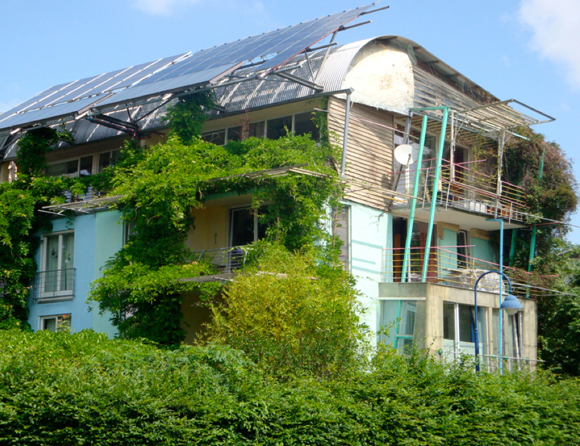
There is an urgent need in the US for new, globally comparable, benchmarked building energy performance policies, indicators based on comparable life cycle costs, and disclosure laws for improved energy performance for new and existing buildings to meet short-, medium-, and long-term goals of the 2030 carbon neutral challenge of the AIA. These targets may be accomplished by implementing innovative sustainable design strategies, generating on-site renewable power, and/or purchasing renewable energy and/or certified renewable energy credits.
LEED Measured Performance in Relation to Modeling
A March 2008 report by Cathy Turner and Mark Frankel of the New Buildings Institute (NBI), analyzed measured energy performance compared to initial design and baseline modeling for LEED New Construction (NC) certified buildings (http://www.usgbc.org/ShowFile.aspx?DocumentID=3930). Of 552 LEED-NC version 2 buildings certified through 2006, only 22% or 121 buildings were able to provide the requested information. Measured energy savings for these buildings averaged 28% compared to code baselines, close to the average 25% savings predicted by energy modeling in the LEED submittals. Some buildings performed much better, but, as the report notes, “There is wide scatter among the individual results that make up the average savings, and nearly an equal number are doing worse—sometimes much worse.” Indeed, roughly a dozen of the LEED-NC certified buildings used more energy than predicted by code baseline modeling.
The variability between predicted and measured performance has significant problems for the accuracy of prospective life-cycle cost evaluations for any given building. Much more feedback from actual building performance results is needed.
Nevertheless, a good start in the right direction is ASHRAE’s recent release of a new Building Energy Quotient labeling program (pilot phase, http://buildingeq.com/), similar to what was launched in the European Union in 2002. One of the key driving forces of European energy-efficient design is the European Union’s 2002 Energy Performance of Buildings Directive (EPBD), inspired by the Kyoto Protocol of 1997, which commits the EU to reduce CO2 by 8% by 2010—that is, to 5.2% below 1990 levels—using radical energy reduction, resource conservation strategies, and renewable resources wherever possible. Each of the twenty-seven members states of the European Union is responsible for individual implementation of the EPBD through national laws. The focus of European sustainable building design at this time is on reducing energy use directly and carbon emissions indirectly. The yearly certification inspections are publicly displayed when buildings are constructed, sold, or rented out, and the actual energy use certificate must be made available to the prospective buyer or tenant.
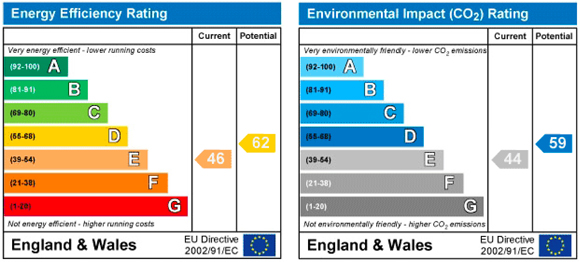
The display certificate is valid for only one year, which means that the continuing title of “sustainable building” has to be earned, based on performance standards such as Low-Energy (30-60kWh/m2), Passive Energy (15-20kWh/m2), Zero-Net-Fossil-, or Plus-Energy-Buildings (which produce more renewable energy than they need, and sell the surplus to the public grid). The display must include the rating from a prior three-year period, so that building occupants can see whether resource-saving improvements have been made or not.
Such actual building resource use displays should be emulated in the United States and Canada. Without clear standards for new buildings and major upgrade requirements for existing buildings, the US will never be able to reduce the carbon emissions from residential and commercial buildings.
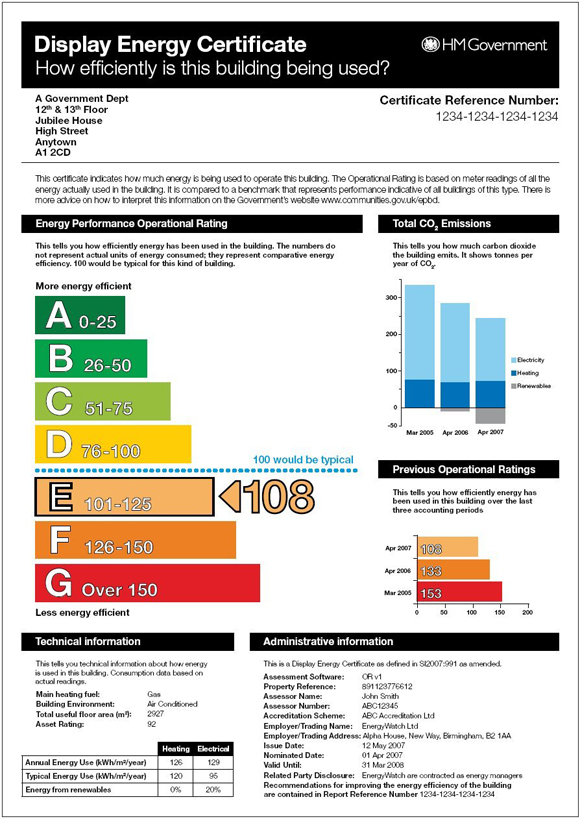
In summary, the European approach substitutes information for regulation. All that is required is to rate the building’s energy use against an objective global benchmarking scale and to tie energy use to the UNFCCC carbon emissions counting and ranking. This is already the practice in the United States with the Energy Star program, but it is only a relative national ranking (the top 25 percent), as opposed to an absolute global benchmarking scale. If the US wants to get serious about reducing energy use in buildings and inducing energy-saving remodels, refurbishments, and renovations, it has to start comparing energy use per unit area per year, reliably linking local practice to global aims.
Global GHG benchmarking means that only systems directly applicable to reliably measuring contributions to climate stability are valid, and more specifically approaches that embrace a 3.3 ton per annum per person carbon dioxide-equivalent target by 2050. This globally benchmarked target is based on a fundamental equity calculation: that on a per-capita basis, each person has only an annual 3.3 ton emissions allowance, if oceans and forests are to be able to neutralize excessive carbon emissions. In contrast, Australia and the United States approach 20 tons per annum per person, while most developing countries, including India and China, will increase dramatically in the long run.
European national governments have been far more willing to accept the conclusions of climate science than American or Canadian governments and have been willing to develop practical public, social-cultural, and economic policies for reversing the growth of carbon emissions, including subsidies, laws, and regulations to implement these sustainability driven policies. It seems that the future of Obama’s Agenda 2050 is already implemented in other world communities today with a growing number of city business, industry, science, technology, and governmental groups worldwide being challenged to respond and deliver solutions for zero-fossil-resource operated infrastructures, cities, and buildings.
“The most important question arises from the following fact: the maximum ecological burden which world civilization can cope with will be reached before the limit of availability of finite resources. According to the findings of the Intergovernmental Panel on Climate Change (IPCC), climate gases will have to be reduced by at least 60 per cent by 2050 if ecosphere collapse is to be avoided.”—Hermann Scheer, President of EUROSOLAR, the European Association for Renewable Energy and Chairman of the World Council for Renewable Energy, “The Post-Fossil Future,” Le Monde Diplomatique, France, June 2006.
Architect, engineer and industrial designer Thomas Spiegelhalter, ACE, ISES, LEED AP, is principal of Architecture Office for Sustainability in Freiburg, Germany, and professor at Florida International University in Miami. He has taught previously in Kaiserslautern and Leipzig, Germany, and at Carnegie Mellon University and the University of Southern California.
Originally published 3rd quarter 2009, in arcCA 09.3, “Beyond LEED.”




